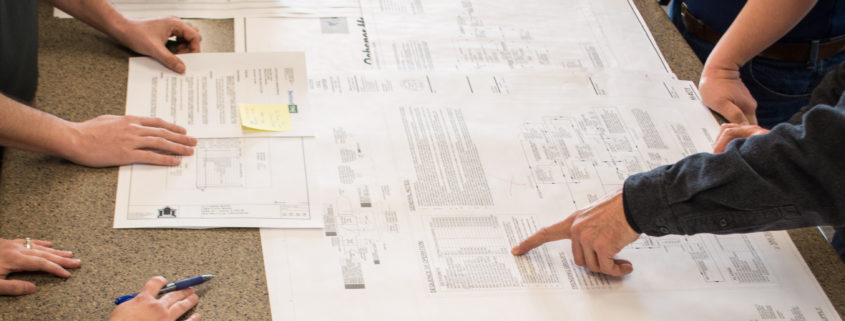Retro-commissioning Taboo: The Ugly Truth of Savings Degradation and What to Do About it
By: Ashley Downes, vice president
_______________
Industry Snapshot
Rising energy costs often become an issue for hospitals as their facilities and equipment age. In such cases, retro-commissioning is a valuable solution. Retro-commissioning a building’s existing energy infrastructure can improve occupant comfort and environmental quality while also optimizing energy conservation and saving money. Whether the goal is to reduce energy costs or to allocate resources for staffing and facility improvements, evaluating and adjusting energy systems can enable a healthcare facility to focus on its mission: patient care.
As buildings and equipment age over time, a facility’s energy use may change as well. Without efficient operations and maintenance, these factors can cause the savings from a retro-commissioning project to dwindle. This is when facilities encounter degradation, and previous savings can fall by up to 10 percent after the first year. After five years, the savings found through retro-commissioning can vanish completely. So how do we make sure facilities continue to save on energy costs in the long term?
Long-Term Solutions
One option is to pay for a whole new retro-commissioning every few years, so that after the savings are lost, a new revamp takes place. However, I recommend facilities participate in constant commissioning, which costs less over the long-term than repeated full retro-commissionings and fights savings degradation. This process uses remote monitoring to help facility managers actively understand how their systems are changing daily, for better or worse, to prevent the loss of energy savings.
Remote monitoring helps operators verify sustained savings for the facility through the use of measurement and verification, automated fault detection, and continuous data collection and archival. The advanced measurement and verification system I utilize produces a scorecard on the facility’s performance that illustrates its current energy usage versus the usage before retro-commissioning to give a better understanding of the changes and their effects. Automated fault detection sends a real-time notification when a problem is identified in the energy system, allowing facility managers to immediately address it. Additionally, I would recommend the use of continuous data collection and archiving. This will give you the ability to track a facility’s energy trends over long periods of time, revealing insights that might not otherwise be obvious. All of these tools allow facility managers to make data-driven decisions to keep their energy systems optimized.
The Secret Sauce
In addition to these tools, there’s one other thing that’s equally as important in the fight against savings degradation: buy-in from the facility’s staff. In short, to maintain the savings, the staff has to understand how the new infrastructure works and why it matters.
During a retro-commissioning project, it’s important to comb through the building’s automation system to understand how things are operating in terms of air flow, outside air, and pressurization. With this baseline, it’s time to reprogram the system to create and maintain optimal levels, taking into account building codes, pressurization requirements, etc. This is where organizations find savings– by reducing factors like fan speeds and simultaneous heating and cooling, one of the biggest drivers of energy costs in a hospital. The end goal is to reach a point where everyone at the facility is comfortable and the energy use is at a minimum.
This is only the beginning. If the actual operations and maintenance staff at the hospital begin to operate this new system but don’t understand how the specific changes made in the retro-commissioning process work, they may be tempted to be reactionary in the day-to-day. Oftentimes, staff members override the changes in order to facilitate a specific request, rather than simply allowing the system to do its job. In some cases, we’ve even seen staff members remove or delete programming altogether. If these things happen, savings the hospital would have seen from retro-commissioning can go out the window.
For this reason, it’s very important to have staff members trained in not only how to utilize the new system but also why it matters. These trainings should be given by those who performed the retro-commissioning in order to maintain maximum savings. A general knowledge of how the facility’s energy systems work is not enough to ensure staff members understand why the system is operating the way it is after a retro-commissioning. Again, if they don’t understand why, they’ll often go right back to what they’re used to, and facility energy costs will go back to what they were as well.
Culture
To get staff members on board, there needs to be a top-down culture change. Upper management has to be on board with the retro-commissioning changes and be willing to challenge staff members who want to make overrides. This is not to say that overrides can never happen. Changes may be necessary at times to deal with hot or cold calls or other pressing issues. However, any overrides should be targeted and temporary, and it’s vital that staff members recognize this.
Meanwhile, feedback from those staff members, patients, and physicians, is also important. While outside retro-commissioning teams generally understand how hospitals operate, they also recognize each facility is different and some adjustments may be needed. That’s why constant commissioning works best. When there is a strong relationship between the facility and the people monitoring its systems, long-term success is attainable. Together, partners can ensure the hospital is operating efficiently (with its energy and its monetary resources) in a way that is truly optimized for its core mission: helping the community.
_______________
About the author
For the last decade, Ashley Downes has spent her career helping establish Bernhard’s retro-commissioning service line and now spends countless hours traveling across the United States as a steward for healthcare facilities working to save them energy costs. She is currently a director in Bernhard’s engineering division. Her team focuses on hospitals and medical centers, which during the COVID-19 pandemic have been asked to do more and stretch their facility capabilities further. With Ashley’s guidance, they can make strategic systems improvements, shift use and utility, reconsider scheduled maintenance and see savings in utility spend.



